
LSAT For Dummies, 2nd Edition
Published by:
John Wiley & Sons, Inc.,
111 River Street,
Hoboken, NJ 07030-5774,
www.wiley.com
Copyright 2014 by John Wiley & Sons, Inc., Hoboken, New Jersey
Media and software compilation copyright 2014 by John Wiley & Sons, Inc. All rights reserved.
Published simultaneously in Canada
No part of this publication may be reproduced, stored in a retrieval system or transmitted in any form or by any means, electronic, mechanical, photocopying, recording, scanning or otherwise, except as permitted under Sections 107 or 108 of the 1976 United States Copyright Act, without the prior written permission of the Publisher. Requests to the Publisher for permission should be addressed to the Permissions Department, John Wiley & Sons, Inc., 111 River Street, Hoboken, NJ 07030, (201) 748-6011, fax (201) 748-6008, or online at http://www.wiley.com/go/permissions .
Trademarks: Wiley, For Dummies, the Dummies Man logo, Dummies.com, Making Everything Easier, and related trade dress are trademarks or registered trademarks of John Wiley & Sons, Inc., and may not be used without written permission. LSAT is a registered trademark of Law School Admission Council, Inc. All other trademarks are the property of their respective owners. John Wiley & Sons, Inc., is not associated with any product or vendor mentioned in this book.
LIMIT OF LIABILITY/DISCLAIMER OF WARRANTY : WHILE THE PUBLISHER AND AUTHOR HAVE USED THEIR BEST EFFORTS IN PREPARING THIS BOOK, THEY MAKE NO REPRESENTATIONS OR WARRANTIES WITH RESPECT TO THE ACCURACY OR COMPLETENESS OF THE CONTENTS OF THIS BOOK AND SPECIFICALLY DISCLAIM ANY IMPLIED WARRANTIES OF MERCHANTABILITY OR FITNESS FOR A PARTICULAR PURPOSE. NO WARRANTY MAY BE CREATED OR EXTENDED BY SALES REPRESENTATIVES OR WRITTEN SALES MATERIALS. THE ADVICE AND STRATEGIES CONTAINED HEREIN MAY NOT BE SUITABLE FOR YOUR SITUATION. YOU SHOULD CONSULT WITH A PROFESSIONAL WHERE APPROPRIATE. NEITHER THE PUBLISHER NOR THE AUTHOR SHALL BE LIABLE FOR DAMAGES ARISING HEREFROM.
For general information on our other products and services, please contact our Customer Care Department within the U.S. at 877-762-2974, outside the U.S. at 317-572-3993, or fax 317-572-4002. For technical support, please visit www.wiley.com/techsupport .
Wiley publishes in a variety of print and electronic formats and by print-on-demand. Some material included with standard print versions of this book may not be included in e-books or in print-on-demand. If this book refers to media such as a CD or DVD that is not included in the version you purchased, you may download this material at http://booksupport.wiley.com . For more information about Wiley products, visit www.wiley.com .
Library of Congress Control Number: 2013954087
ISBN 978-1-118-67823-7 (pbk); ISBN 978-1-118-67812-1 (ebk); ISBN 978-1-118-67845-9 (ebk)
Manufactured in the United States of America
10 9 8 7 6 5 4 3 2 1
Chapter 1
The L Team: The LSAT and Its Administrators
In This Chapter
 Exploring the various sections of the LSAT
Exploring the various sections of the LSAT
 Understanding the LSAT scoring system
Understanding the LSAT scoring system
 Knowing how and when to register for the LSAT
Knowing how and when to register for the LSAT
 Studying for the LSAT
Studying for the LSAT
 Meeting the LSAC
Meeting the LSAC
I f you want to go to law school, you must take the Law School Admission Test, a.k.a. the LSAT. The more than 200 law schools that belong to the Law School Admission Council (LSAC) require it (see the later section for info about the LSAC). Law schools that don't require it may not be approved by the American Bar Association (ABA), which in turn may not qualify you for admission to a state bar, so be careful about choosing a school that doesn't require the LSAT.
The LSAT, annoying though it can be, is the only means law schools have of evaluating all their applicants on the same playing field. Colleges are different, backgrounds are different, and cultures are different, but the LSAT is the same for everyone. The LSAT is carefully designed so that the testing experience of test-takers is virtually identical. Everyone has the same time per section, the same rules, and the same testing environment. And each LSAT test is crafted so that test-takers have a 90 percent chance of scoring the same on a different version. So, law schools feel confident that the LSAT is an objective measure of student ability.
Grade point averages, unlike the LSAT, are highly subjective; they vary depending on the difficulty of a school, the difficulty of particular courses, and other random and unpredictable factors (like the grading policies of individual professors). Law school applications include other information like personal statements that can give schools an idea of a student's abilities, but the schools still can't know for sure that they're getting the real goods plenty of students get help writing those essays. That leaves the LSAT as one of the most reliable and objective means to compare candidates.
In this chapter, you get an introduction to the LSAT and its various parts and learn all about registering and preparing for the big day. You also get a peek at the organization behind all this madness, the LSAC.
 If you're going to be a lawyer, you have to get used to disclaimers, and here's ours for this chapter. The technical information we offer about fees and procedures is subject to change, so refer to the official website ( www.lsac.org ) to verify the facts and figures for yourself.
If you're going to be a lawyer, you have to get used to disclaimers, and here's ours for this chapter. The technical information we offer about fees and procedures is subject to change, so refer to the official website ( www.lsac.org ) to verify the facts and figures for yourself.
Getting to Know the Enemy
If you want to get a decent score on the LSAT, you need to know the test. You can't expect to walk into a test center cold, never having encountered an LSAT in your life, and just ace the questions.
You don't necessarily have to study for a long time. If you're good at standardized tests, you may be able to flip through one or two sample tests, work a few of the problems, get the idea, and score in the 95th percentile. Some people can. If, on the other hand, you find standardized tests generally challenging, and the LSAT difficult in particular, you probably need to devote yourself to more practice time to master the proven strategies provided by this book. Whatever your situation, keep motivated and prepare with the certainty that you can and will improve with dedicated practice.
The LSAT consists of four parts:
- Analytical reasoning section
- Logical reasoning section
- Reading comprehension section
- Writing sample section
The writing sample section is the only section that isn't multiple choice, and it's always last. The other three multiple-choice sections can come in any order. You take six separate test sections: two scored sections of logical reasoning, one scored analytical reasoning section, one scored reading comprehension section, one writing sample, and one unscored section that can be any of the three multiple-choice sections. You don't know which section is unscored, and the unscored section looks just like any other LSAT test section. Every section lasts 35 minutes.

Next page
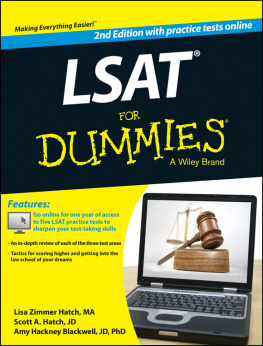
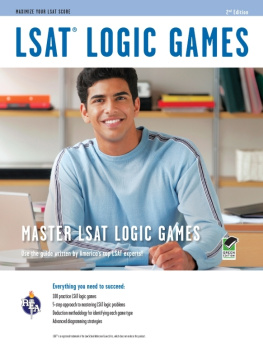


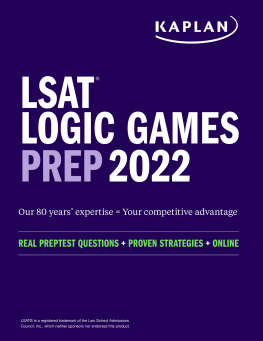

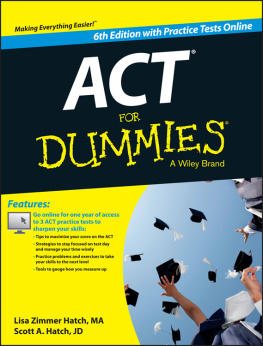
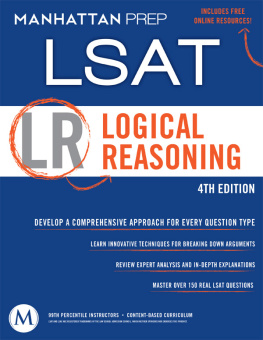
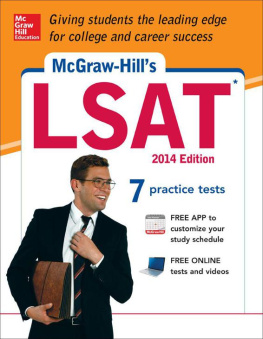

 Exploring the various sections of the LSAT
Exploring the various sections of the LSAT If you're going to be a lawyer, you have to get used to disclaimers, and here's ours for this chapter. The technical information we offer about fees and procedures is subject to change, so refer to the official website ( www.lsac.org ) to verify the facts and figures for yourself.
If you're going to be a lawyer, you have to get used to disclaimers, and here's ours for this chapter. The technical information we offer about fees and procedures is subject to change, so refer to the official website ( www.lsac.org ) to verify the facts and figures for yourself.